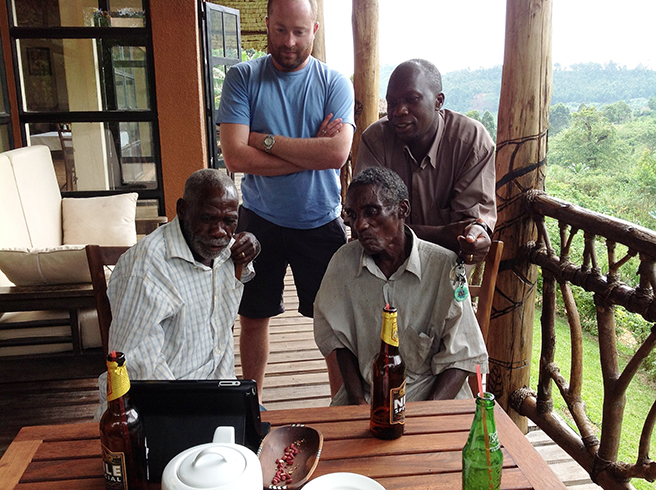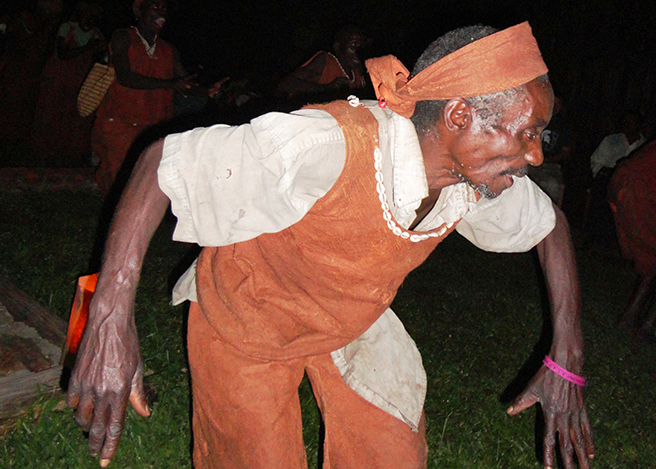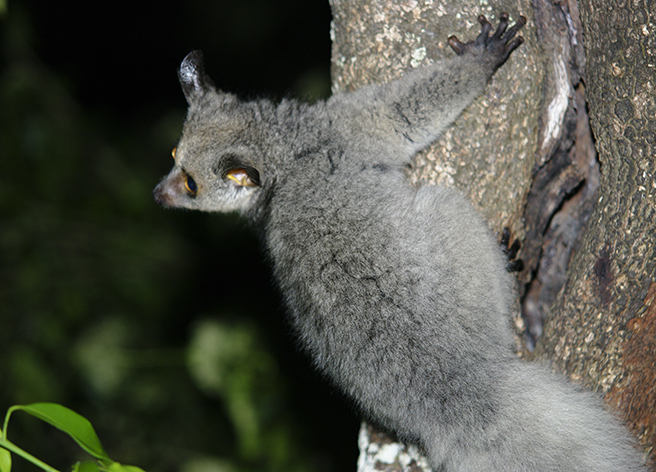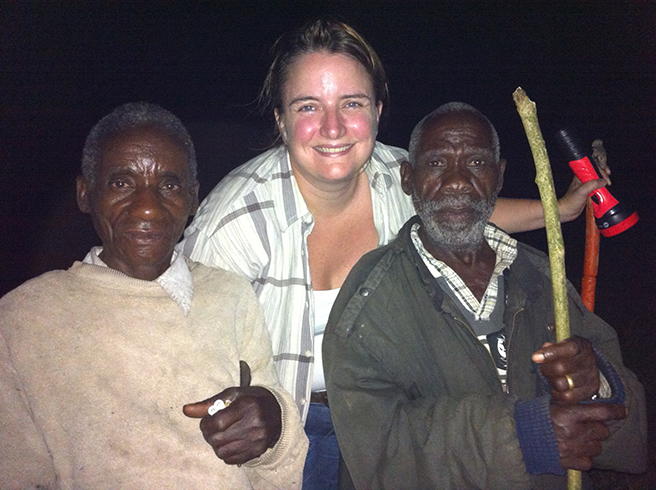Walking with the Batwa

The old man clapped his hands in recognition as he recognized the picture of the Porcupine on the iPad. He started chattering excitedly in his own tongue, gesturing wildly as if he was throwing hunting spears at an imaginary prey. At once he recoiled, as he mimed being hit by porcupine quills, calling “Pew! Pew! Pew!” to mimic the sound as the spines flew through the air. He ended his charade with cries of pain worthy of an Oscar-winner as we all fell about laughing at his antics.
We were drinking tea with two elders from the Batwa tribe (well, we were drinking tea – they had ordered a beer each), an ancient forest people once resident throughout the primary forests of southwestern Uganda. These proud hunter-gatherers are the oldest inhabitants of the Great Lakes region, with a rich culture that extends back hundreds of thousands of years. The first record of their existence dates from 4,000 years ago, when Ancient Egyptian scrolls described them as excellent dancers and story-tellers who lived off the forests of Central Africa.
Indeed, we had met these two elders at a cultural performance. The Batwa had entertained us with dancing and singing (with a little traditional fire-starting thrown in for good measure) whilst we were staying at Mahogany Springs, a lodge overlooking Bwindi Impenetrable National Park. Bwindi is home to Uganda’s population of mountain gorillas, and the pressure to conserve these gentle giants led to one of the darker periods in recent Batwa history – their eviction from the very forests they once called home.

Now, many are landless, and their sudden and lasting separation from their traditional way of life has resulted in many social problems amongst their communities. For many years, Batwa were paraded in front of tourists in the worst sort of anthropological voyeurism, and only now, with the help of organizations like The Batwa Development Program (BDP) and the United Organisation for Batwa Development in Uganda, are things slowly starting to change. BDP, for example, had invested in a 220 acre patch of forest, contiguous with Bwindi Impenetrable National Park itself, as a piece of land where the Batwa could display their traditional skills as part of a living history experience – offering tourists the chance to glimpse into the past and giving the Batwa a chance to raise much-needed income and keep their heritage alive.
As original custodians of the forest, we had asked the Batwa if they could guide us on a nocturnal walk of their forest. Night walks in Bwindi were not permitted – but we knew that the Batwa Forest had a corridor with the national park and there was a good chance it would be filled with the same nocturnal species. This led to our tea-drinking session with the Batwa, a chance to see if they recognized some of the species we were hopeful to spot, from being resident in their own forest. Watching the elders deftly swipe the screen of the iPad , a device they had not previously encountered before that afternoon but took only seconds to master, was an awe-inspiring moment. Proud members of an ancient people were scrolling deftly through the images we had prepared – delighting in this example of a digital future - as porcupines, pangolins, galagos, pottos and genets flashed before us on the screen.

We set off around ten o’clock, the two elders bounding up the track that wound in and out of the banana palms. One was reportedly 82 years old and fit as a fiddle – we struggled to keep up. We needn’t have worried – every 100 meters or so he stopped to point out something of note, which was then translated into English by an accompanying guide. After twenty minutes or so the plantation gave way to the trees, and the path wound up around the hill, with steep drops to our right and the valley below.
We had brought with us a variety of torches and lights. Handheld torches to shine at our feet to find our way, with red filters on headtorches to spot for eyeshine. Holding our headtorches level with our own eyes and scanning the neighboring trees would reveal a sudden glow from a pair of eyes. Sometimes the creature would vanish before we could identify it, but on several occasions, we would sit and watch as a galago scurried through the branches of a nearby tree.
At one point, one of the Batwa elders grabbed my hand and pulled me close, gesturing silently into the shadows. He slipped easily off the path and into the thick vegetation, parting branches for us and gesturing to shine our lights. We swung our beams in the direction he was motioning. Deep inside the web of branches a Diederik Cuckoo was fast asleep on its perch, remaining blissfully oblivious to the intruders in its midst.
We spent three hours exploring with the Batwa, and in every hour that passed we became less obsessed with spotting galagos and more and more fascinated by these charming ambassadors of the forest. All thoughts of eyeshine were quickly forgotten as we watched spellbound, as one of the elders demonstrated (using his excellent mime skills once again) the way they used to hunt. The energy and passion of the Batwa for the life they once led was a poignant reminder of their current status, and of the conflicting pressures between humanity and wildlife all over this continent.

The Batwa had brought their own torches – cheap rechargeables from the local market. Their light soon dwindled and died, and so we loaned them some of the more powerful headtorches and spotlights from our collection. Their excitement was palpable as they tried out the new torches, and they chattered away in an animated fashion as they shone their lights around the forest. I asked our translator what they were saying.
“They say they have never had such good light. They say that if they had this light they could walk all night and they would never have to leave the forest.”
Watching the two octogenarians skip down the path as we descended the mountain, totally at home in this canopy of trees, I wondered if their way of life would ever become more than a happy memory.
Visitors to Buhoma, in northern Bwindi, can enjoy a daytime ‘Batwa Experience’ with the Batwa Development Program for a glimpse into the rich history of these fascinating forest people.
Photo credits: (1) Anne-Marie Weeden; (2) Joan Namulwya; (3) Andy Gooch; (4) Nick Ball